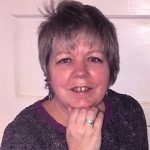
In our latest blog post, Sarah Pavey, the School Libraries representative for the CILIP Information Literacy Group, talks about current ways that are normally used to teach fake news and instead suggests that a flipped approach is best.
We may settle down and watch the latest episode on television of members of the public delving into the world of antiques. We whoop with delight when identifying the valuable artefact correctly and even exhibit a wry smile when some hapless contestant gets it so wrong. But unless we are also art dealers with years of experience can this success be more than just chance good luck or do we back up our decisions with subtle clues? How does this translate when we are asking non-experts about the information they find online?
Last week I attended (virtually) a presentation from Making Sense of Media who shared the latest findings of the Ofcom research 2022 into our digital lives (Ofcom, 2022). I was intrigued by the way they had chosen to expand how they evaluated susceptibility to fake news in this year’s survey. Instead of just asking respondents to say which of a range of articles might be fake and record a correct or incorrect answer, they chose to discover if people could give a valid reason to back up their choice. This then eliminated the “lucky guess” element from their results. And this did have a significant effect on their findings.
“Although seven in 10 adults (69%) said they were confident in identifying misinformation, only two in 10 (22%) were able to correctly identify the tell-tale signs of a genuine post, without making mistakes. We saw a similar pattern among older children aged 12-17 (74% confident but only 11% able)”.
This seems to be a perfect example of the Dunning-Kruger phenomenon. This can be defined as:
“a cognitive bias whereby people with limited knowledge or competence in a given intellectual or social domain greatly overestimate their own knowledge or competence in that domain relative to objective criteria or to the performance of their peers or of people in general”.
(Dunning & Kruger, 1999)
A few days later there was a post on a school librarians’ forum asking colleagues for examples of “fake websites”. The usual links were proffered but were these simply going to be used as a game of “spot the genuine article”. If so, what would be the intended learning outcomes or would answers just be reduced to right and wrong with scant explanation? What would students take away from this experience? I have always been concerned about the teaching of fake news in this way and the Ofcom survey rather backs up that we need to pay more attention to the rationale underpinning the choices made. I am an advocate of game-based learning but sometimes the deliberate humourous content of these fake sites overshadows the learning element. If we are to teach students about the importance of evidence, then maybe we need a different approach. Maybe we need a lesson plan that eliminates the “lucky guess” too.
One solution might be to tap into students being the creators of content in the future. We know we acquire knowledge through “standing on the shoulders of giants” and we can explain that for society to exist and continue to develop, those giants need to have firm foundations and integrity. Building on this concept, we could ask students to create a website page and then to include deliberate elements to show a reader that the content is genuine and trustworthy. These pages do not have to be live – there are plenty of apps and mockups available freely online to help with the design. The exercise could be applicable to all ages of students. By flipping the concept in this way, we enable students to think upon the validation and the positives of integrity pro-actively rather than simply spotting what is wrong in passive and reactive mode. There is plenty of pedagogical evidence that a hands-on approach to learning using constructivist principles is beneficial to retaining knowledge and application of use in context.
It is re-assuring to know that some school librarians have been asked to contribute to information literacy and critical thinking lessons and we should rightly capitalise on these opportunities. However, we do need to be mindful of learning outcomes. Ofcom state that 6% of those surveyed still believed that everything they read or saw online was truthful. Students in this cohort would obviously gain from being taught about hoax websites. But should we be more concerned about students claiming to be competent internet users who clearly are not in practice?
References
Kruger, J. & Dunning, D. (1999). Unskilled and unaware of it: how difficulties in recognizing one’s own incompetence lead to inflated self-assessments. Journal of personality and social psychology, 77(6), p.1121.
Ofcom (2022). The genuine article? One in three internet users fail to question misinformation. Available at: https://www.ofcom.org.uk/news-centre/2022/one-in-three-internet-users-fail-to-question-misinformation
Interested in this post? Leave a comment!




You might also want to look at the techniques and lesson plans from Civic Online Reasoning out of Stanford University. You need to get an account but it doesn’t cost any money…https://cor.stanford.edu/. Their method is based on that of Mike Caulfield, called SIFT. Media Smarts out of Canada also has a number of useful resources for teaching students to evaluate the value of a source: https://mediasmarts.ca/. Finally the youtube videos done by John Green on the topic are highly accessible to secondary school students and teachers: https://www.youtube.com/watch?v=pLlv2o6UfTU